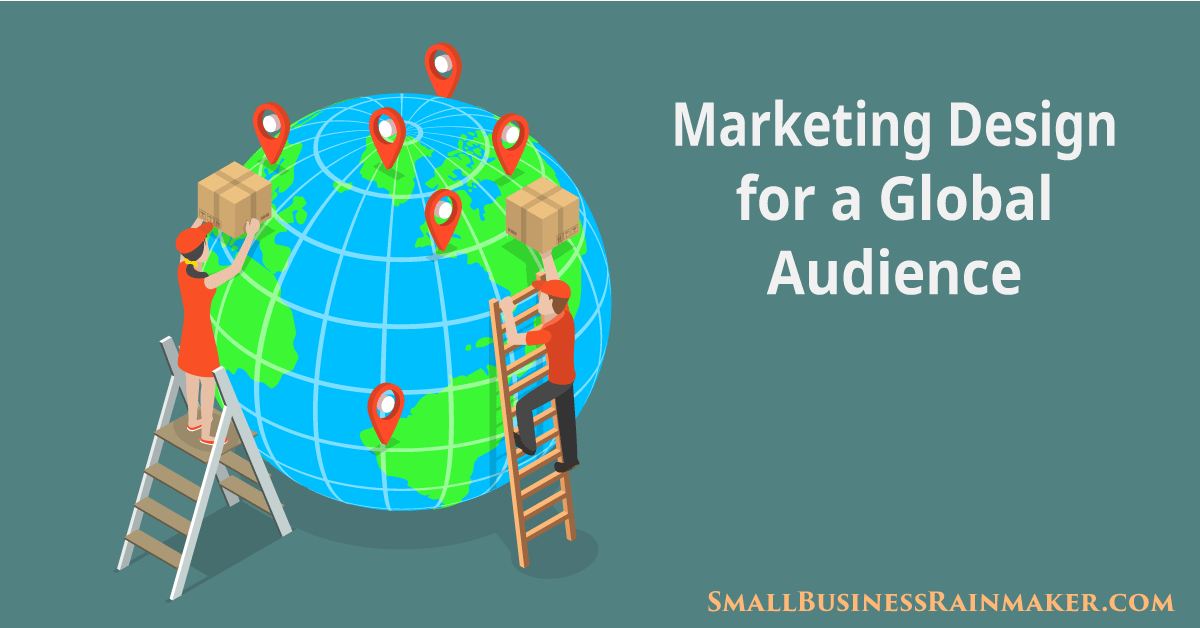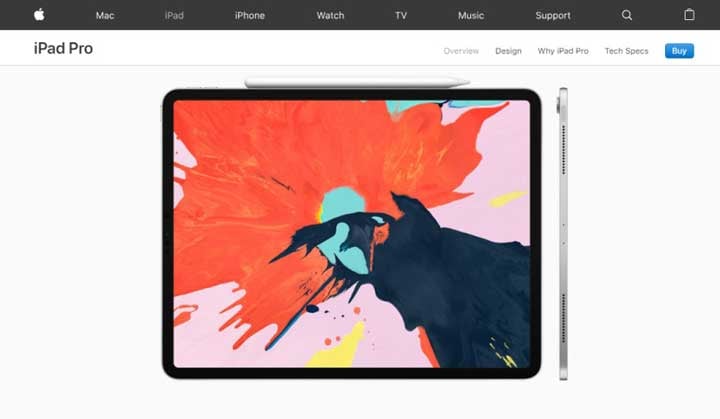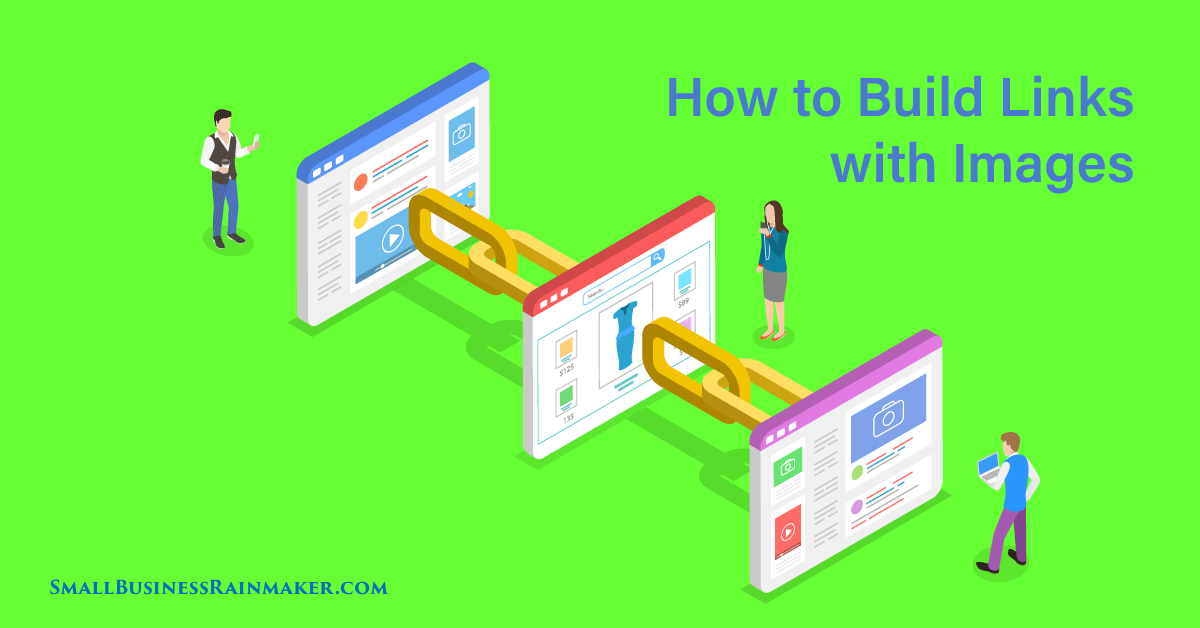
Before the dawn of the internet, few companies had global reach. It took an enormous amount of resources, effort, money, and time for a company to sell its goods globally.
But that is no longer the case. Today, even small, home-based businesses can sell their products and services to a global customer base. It’s not uncommon for a small business in the US to sell its products to customers in Australia. Professionals based in Japan can offer their services to a client in the UK.
6 Tips to Design Your Business for Global Marketing Reach
A global target audience comes with its own set of challenges and obstacles. People from different places have different expectations, and your website design should be flexible enough to handle that.
In this article, we take a look at different approaches to design for a global audience, including global marketing examples.
1. Understand Your Reach

Even if you’re targeting a wide, global audience, it is a good idea to understand your reach. For example, you might have a product or service that might be especially appealing to audiences in Asia, but not particularly appealing to audiences in Europe. That means you can add design flourishes that are suitable for your primary audiences.
This can be done in a neutral fashion. For example, red is an auspicious color to Asian audiences. Adding flourishes of red to your website design might make it more appealing to them without being offensive to European, Australian, or American audiences.
You can’t really pin down a specific audience for your website when you have a global presence, but selling to the majority can help ensure you have some direction during the design process.
2. Stick with Minimal Design
Minimalism is all the rage these days because the design concept has a truly universal appeal. That makes this style ideal for global websites as well. Minimal design is clean, clutter-free, and focused. It draws people’s attention to the most important aspect of the page, which can be a product or service description. There are no distractions or confusing elements that might be clear to you but baffle people from other regions.
The minimal design also adapts well to all kind of devices and platforms. For example, people in poorer countries might have older devices and slower internet. A minimal website will load quickly because the file sizes are smaller and they will look great on older device screens as well.
This design style has become very popular in recent years, but there are some sites that do it exceptionally well. One of the biggest success stories in minimal design is Google itself. The search engine became so popular because the search page is very minimal with no frills.
Another example of excellent minimal design is Apple. The company combines elegance and minimalism perfectly.
 The idea is to say more with less. For example, a carefully selected image will give users a strong impression of your brand and products without a whole lot of text.
The idea is to say more with less. For example, a carefully selected image will give users a strong impression of your brand and products without a whole lot of text.
3. Choose Responsive Design
It is important for your website to have a responsive design. The responsive design approach ensures the site looks great and performs well regardless of the type of device it is on. Responsive design improves the overall mobile performance, which can help your site become more visible on search engines as well.
Responsive websites have a reliable structure that is easy to figure out and use. The layout is predictable and user-friendly, so people from any region across the world can understand it.
It is also important to ensure all layouts are predictable and follow the common trends. While being unique can help you stand apart from competitors, it won’t help you if users become frustrated with certain elements of your design. Always keep in mind that user-friendliness is the end goal. You can create unique designs that still appeal to the customer base.
4. Make it Easy to Translate

English might be the most popular language for online communication, but not everyone can speak or read it. The truly global websites need to make their content easily translatable.
For example, customers in Japan might want to read the content in Japanese. Customers in South Korea will like Korean content.
Just translating is the first step in the process. If you're on limited resources, you can leave it at that. But if you have some room in the budget, you can customize each page to suit the language and regional preferences.
For example, if the page is translated into Mandarin Chinese, you can alter the design subtly so the background pages the letters well.
Languages look different and have different aesthetics. For example, Arabic sentences are written from right to left. Some Chinese and Japanese text can be written from top to bottom. It is a good idea to accommodate background design accordingly.
5. Choose Colors Carefully
Many colors can have negative connotations in different regions so it is a good idea to stick with something neutral, especially if you have a global presence with no single dominant market.
The best example of this is the Amazon website. It has neutral dark blue, yellow, and white colors that look modern and are still neutral. Walmart also uses a similar color scheme with great results.
A great way to choose the right templates for your website is to look into color theory. It is also a good idea to look at how you can own color on the website and make it a significant part of your brand. Coca Cola, Target, and several other big-name companies do this.
6. Personalize Images, But Keep It Neutral
If you want to appeal to a global audience, you can’t afford to use regular stock photos with stock models. You will have to show global representation in skin color, features, hair, and general presence. For example, if your website is dominated by overwhelmingly western models, it won’t appeal much to African and Asian audiences.
Choosing the right visuals in your marketing can help you connect personally with your audiences. Avoid stock photos and use candid imagery wherever possible. You can hire freelance photographers, graphic designers, and other such professionals for the job.
A good, clean, and simple design will make the website and brand more appealing to a wider audience. As your company grows, you can invest in personalization and create separate portals for different regions with slight modifications in design.
Our guest author Adity Sharma is a content writer working with Ranking By SEO. In her corporate life she writes blogs and articles about SEO, SMO, link building, and more.
















Leave a comment